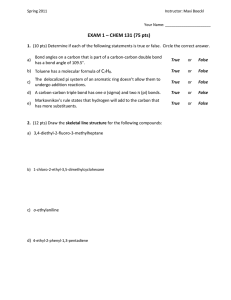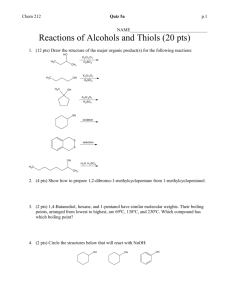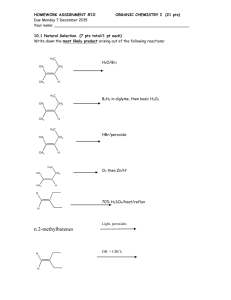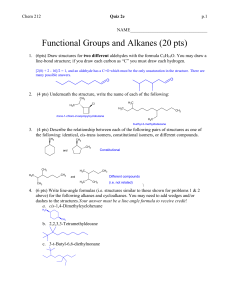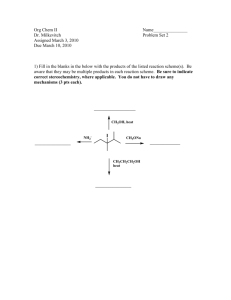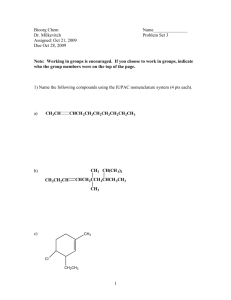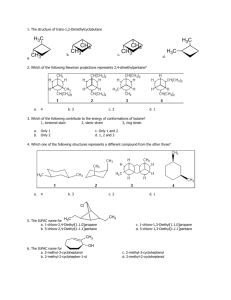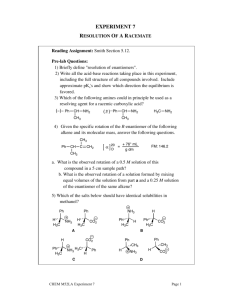Homework 3 answers
advertisement
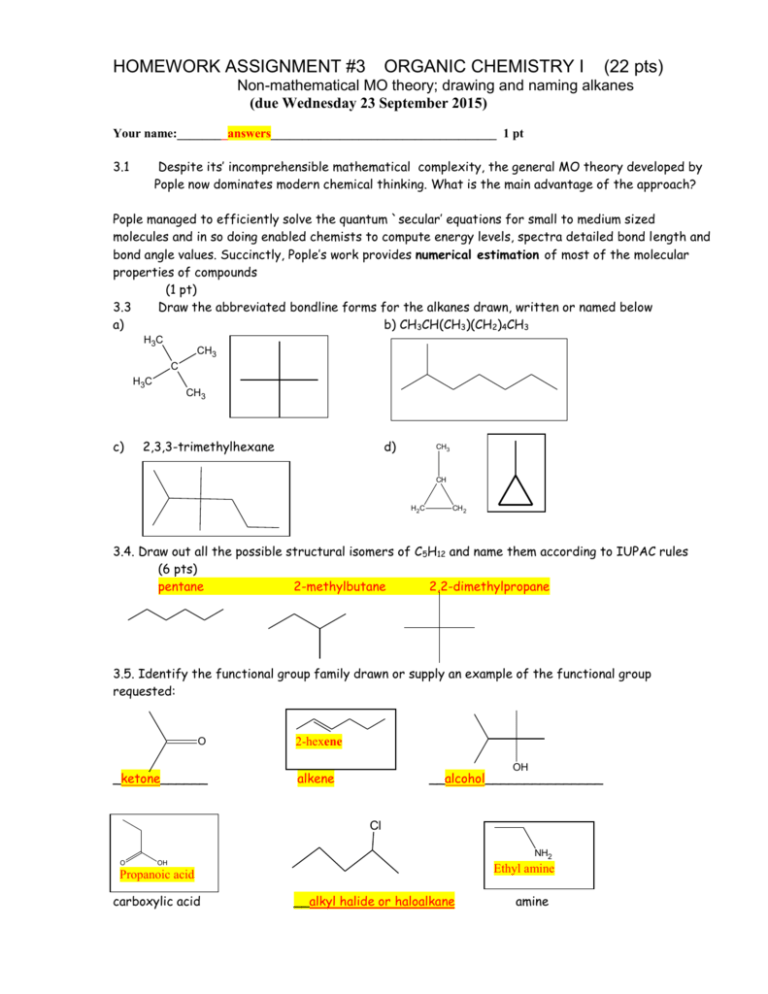
HOMEWORK ASSIGNMENT #3 ORGANIC CHEMISTRY I (22 pts) Non-mathematical MO theory; drawing and naming alkanes (due Wednesday 23 September 2015) Your name:________answers____________________________________ 1 pt 3.1 Despite its’ incomprehensible mathematical complexity, the general MO theory developed by Pople now dominates modern chemical thinking. What is the main advantage of the approach? Pople managed to efficiently solve the quantum `secular’ equations for small to medium sized molecules and in so doing enabled chemists to compute energy levels, spectra detailed bond length and bond angle values. Succinctly, Pople’s work provides numerical estimation of most of the molecular properties of compounds (1 pt) 3.3 Draw the abbreviated bondline forms for the alkanes drawn, written or named below a) b) CH3CH(CH3)(CH2)4CH3 H3C CH3 C H3C c) CH3 2,3,3-trimethylhexane d) CH3 CH H2C CH 2 3.4. Draw out all the possible structural isomers of C5H12 and name them according to IUPAC rules (6 pts) pentane 2-methylbutane 2,2-dimethylpropane 3.5. Identify the functional group family drawn or supply an example of the functional group requested: O _ketone______ 2-hexene OH alkene __alcohol_______________ Cl O NH2 OH Ethyl amine Propanoic acid carboxylic acid __alkyl halide or haloalkane amine 4.1 Name (using IUPAC rules) or draw us: (1 pt each. Spelling counts) 9 pts total 1 1 2,2-dimethyloctane _4-(1methylethyl)-2,5-dimethylheptane (selected parent produces lowest locant count) 1 Cyclobutylcyclohexane __3-ethyl-2-methylhexane____ Cl _____3-ethyl-2,5-dimethylhexane 1 3-chloro-4-(1-methylethyl)-3,6dimethyloctane Cl Br F 1 1-chloro-2-ethyl-3-(1-methylethyl)cyclohexane 7-(1-bromo-1-methylethyl)-2-methyl ___4-propyldecane 1 4-(1-methylethyl)-5-(1,1-dimethylethyl) -5-fluoro-3-methylundecane
